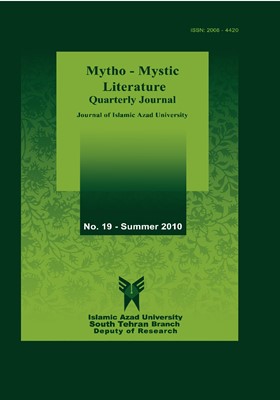-
-
List of Articles
-
Open Access Article
1 - The House of Silence: The Meeting of Mawlānā Jālāl al-Din Balkhi and Shams-e Tabrizi
ابراهیم استاجی -
Open Access Article
2 - The Unveilings of Lāhijī in Sharh-e Gulshan-e Rāz
علی محمد پشتدار محمدرضا عباسپور خرمالو -
Open Access Article
3 - Mystic Contents of Inscriptions of Sheikh Safi al-Din's Tomb
سیدهاشم حسینی -
Open Access Article
4 - Karāmāts and Miracles of the Prophets
رضا صادقی شهپر -
Open Access Article
5 - Woman in Shāhnāmeh and Iliad and Odyssey: A Comparative Study
حجت عباسی حسینعلی قبادی -
Open Access Article
6 - Morphology of Three Stories in Garshāsbnāmeh
فاطمه کوپا نوشین رفیعی سخایی -
Open Access Article
7 - The External Journey (Seire Aafaq) in Sufism
لیلا هاشمیان میثم احمدی
-
The rights to this website are owned by the Raimag Press Management System.
Copyright © 2021-2025







